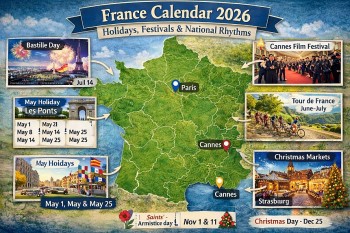Top 10 Strangest Summer Festivals in Europe
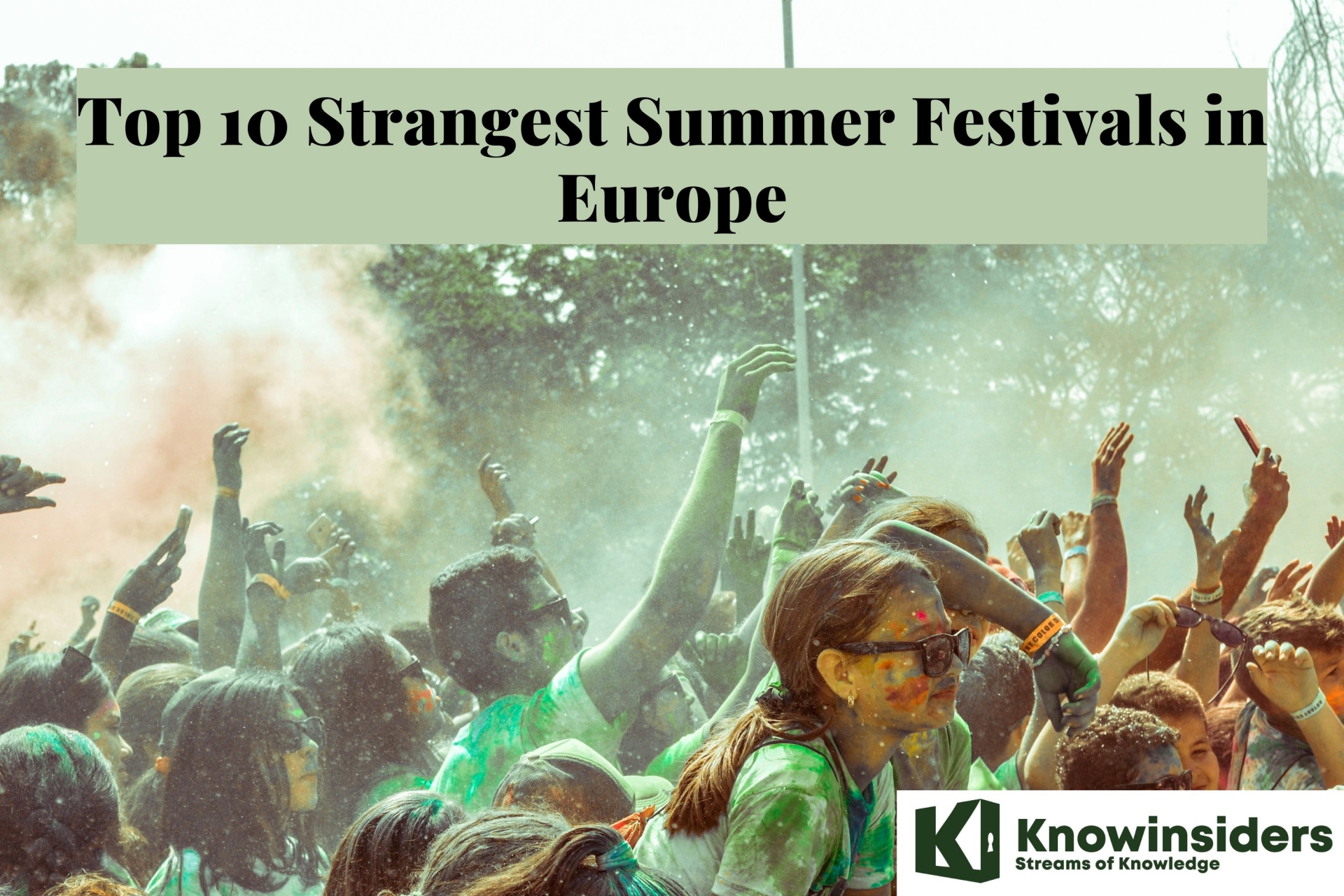 |
| Top 10 Strangest Summer Festivals in Europe |
| Table of Content |
Entering summer is also the time when the unique festival season in Europe officially begins. While many daredevil travelers from all over the world wish to experience the feeling of running in front of 500kg gaurs in the city of Pamplona, Spain, Europe still has fun and unique festivals. Another unique awaits the visitors.
Tomato throwing festival, world "imaginary guitar" championship, world mud diving championship, pig festival, orange festival... are unique festivals in European countries in summer. Let's take a look at some of these festivals.
European Festival: 100 festivals, 40 countries, endless connections
Today, the European Festivals Association (EFA) connects about 100 festivals and festival associations in 40 countries.
EFA members are the core elements that makes the Association an open, influential, international place for any festival that wants to be part of a bigger festival community.
The European Festivals Association’s mission is to unite and represent its member festivals across Europe and the world by contributing to the artistic life of Europe. It acts as the most important platform for arts festivals. EFA members take the joint responsibility that the arts are prioritised offering their platforms to bring the arts to the audiences. Access and participation in culture and the arts is a Human Right.
By supporting and enabling artistic creation, production and participation, EFA and its members ensure that this right is made a reality for all citizens. Interaction between festivals, with public authorities and the other stakeholders in the arts are central to EFA's work.
Top 10 Strangest Summer Festivals in Europe
1. Running of the Bulls, Pamplona, Spain
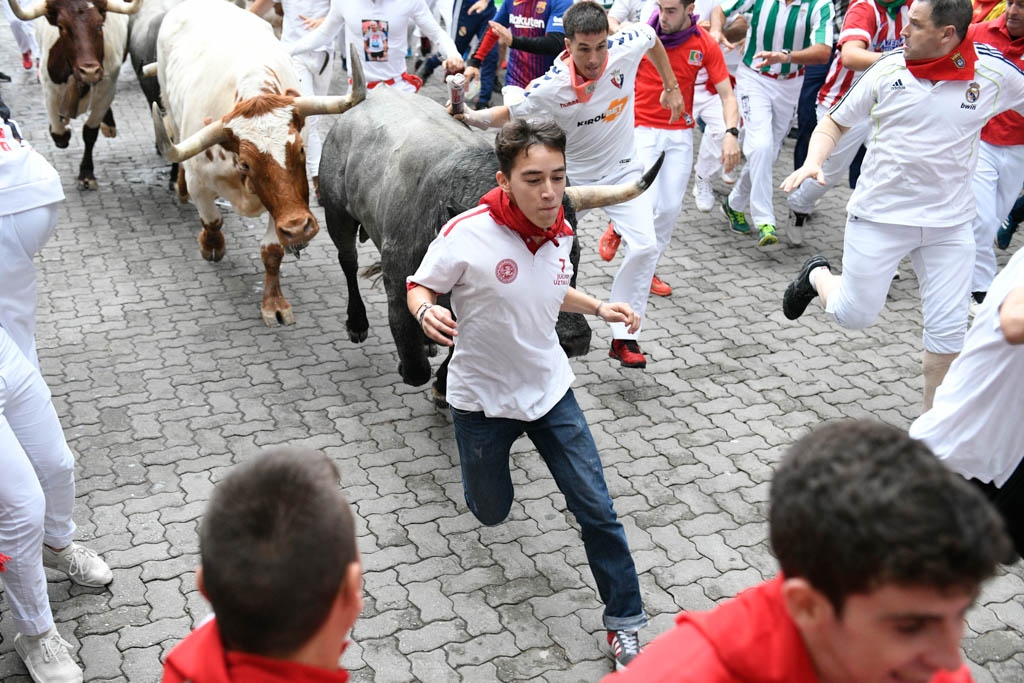 |
| Photo: sanfermin |
An intrinsic part of Pamplona’s annual Fiesta de San Fermin, the Running of the Bulls sees hundreds of adrenaline-seekers from all over the world running in front of six wild, powerful bulls (plus six steers) through the city’s old, narrow streets. The festival runs for nine days, from July 6 through 14, and the raucous event takes place at 8 a.m. every morning.
From all of Spain’s crazy festivals, this one is perhaps the most controversial, and famous – thanks partly to Ernest Hemingway’ book The Sun Also Rises.
2. La Tomatina - Tomato Festival In Bunol, Spain
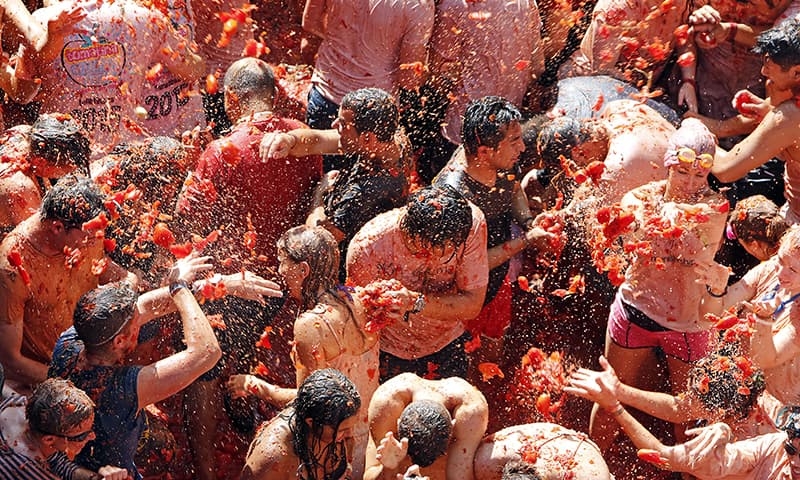 |
| Photo: dawn |
Only in Spain would an entire festival be dedicated to throwing squishy tomatoes at one another. This is no ordinary food fight though. On the last Wednesday of August, thousands descend upon the tiny town of Bunol to have a massive food fight.
About 7 truckloads of tomatoes are distributed through the crowd – distributed meaning pelted at the surging masses. Be warned: this festival is not for the faint of heart. Wear goggles and don’t go into the thick of it unless you don’t mind big crowds. If crowds don’t bother you, get right in there and let out your inner warrior.
Related: Top 20 Weirdest and Most Bizarre Festivals in the World
3. Baby Jumping Festival, Spain
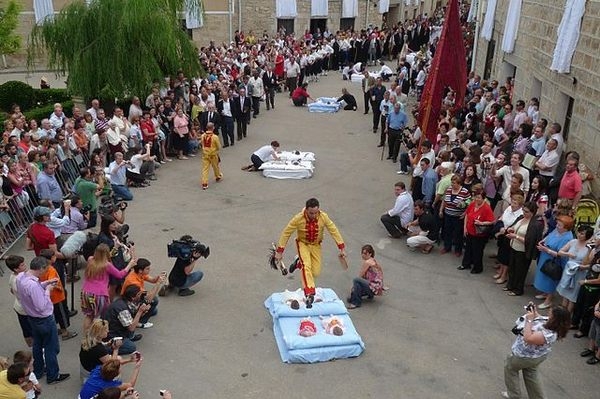 |
| Photo: atlasobscura |
Known by residents as El Salto del Colacho (“the devil’s jump”), the annual Baby Jumping Festival is exactly what it sounds like: people jumping over babies. The event began around 1620 in the village of Castrillo de Murcia in northern Spain. The ritual originally was meant to bless newborn babies and remove original sin — a different kind of baptism.
Today, it involves men dressed as devils in red and yellow jumpsuits leaping over babies born during the year preceding the event. Traditionally, the festival takes place on the Sunday after the holiday of Corpus Christi, which is held in either May or June.
4. Cooper’s Hill Cheese Rolling, England
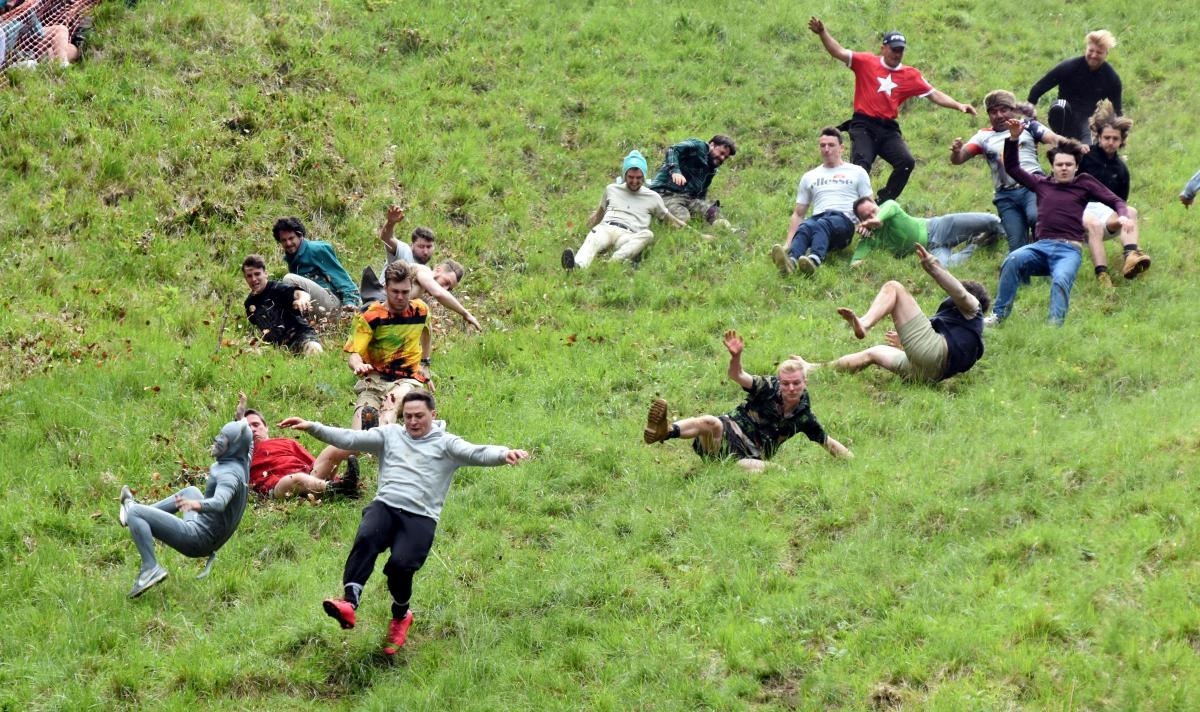 |
| Photo: stroudnewsandjournal |
Cooper’s Hill Cheese-Rolling – named after a hill outside of Gloucester, England where the event takes place – is a race so dangerous that councils have made numerous attempts to ban it. Every year, however, dozens of men and women continue to throw themselves down a steep cliff behind a wheel of Double Gloucester cheese, a tradition with pagan roots that dates back to the early 19th century.
Rolling at speeds of up to 70km per hour, whoever catches the cheese or gets to the finish line first is crowned the winner. The prize? A four kilogram Double Gloucester cheese wrapped in a red and blue ribbon.
5. Wife Carrying World Championships, Sonkajärvi, Finland
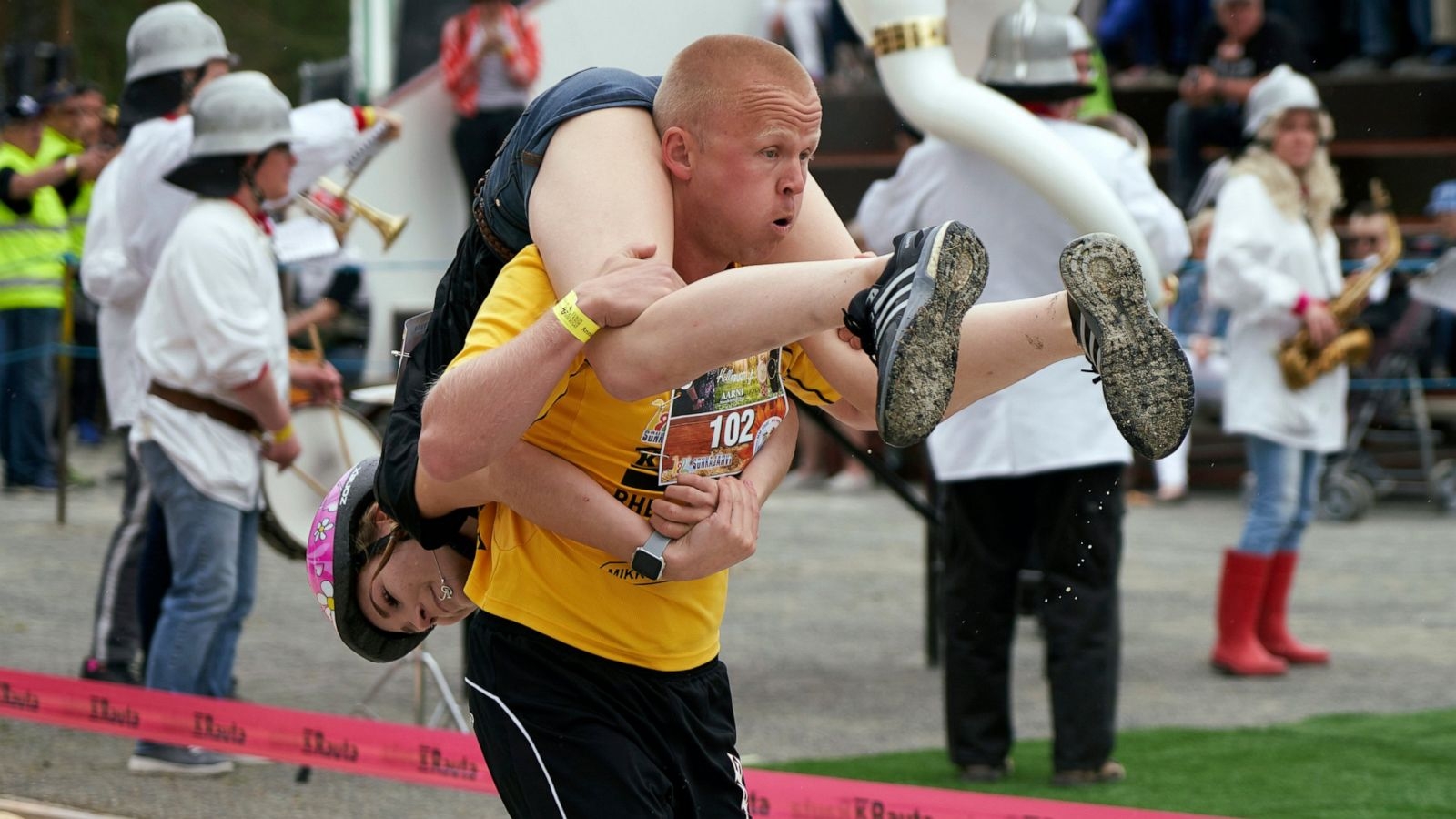 |
| Photo: abcnews |
It pretty much is how it sounds; this festival involves carrying one’s wife to win a relay race. It’s not just a race, it’s a full on obstacle course with fences, sand, and a pool to go through. Only certain ways of carrying are allowed: piggyback, fireman’s hold (over the shoulder), and Estonian-style (wife hangs upside down with legs wrapped around the husband’s head, with arms around their waist). What’s the prize, you say? You win your wife’s weight in beer.
The sandy track is 253.5 meters long and includes two dry obstacles and one water obstacle. And don’t worry: If a participant drops his wife, he’s allowed to pick her back up and continue. This year’s competition was held in July, but be on the lookout for dates for 2017.
6. Battle of the Oranges, Ivrea, Italy
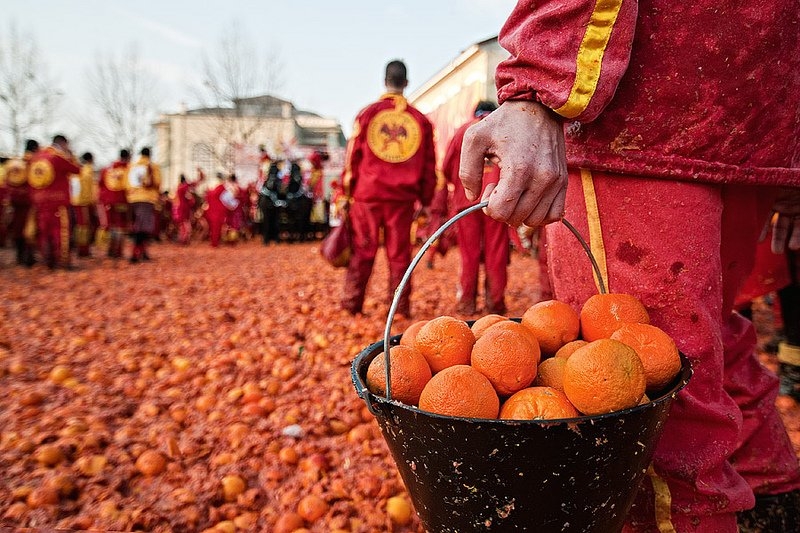 |
| Photo: tripzilla |
Each year, in the days preceding Shrove Tuesday, the UNESCO-listed Italian town of Ivrea turns into a citrus-strewn battlefield where participants launch 600,000 kg of oranges at one another as part of the city’s Historic Carnival.
Steeped in history, the Battle of the Oranges aims to recreate a 12th-century combat between the locals and the Royal Napoleonic troops, with 9 teams of aranceri (orange throwers) on foot fighting against 40 aranceri carri da getto (orange throwers in carts). This symbolic orange war is the largest food fight in Italy and one of its most unique events.
Related: Top 60+ Funniest and Weirdest Holidays in the US
7. Busójárás, Mohács, Hungary
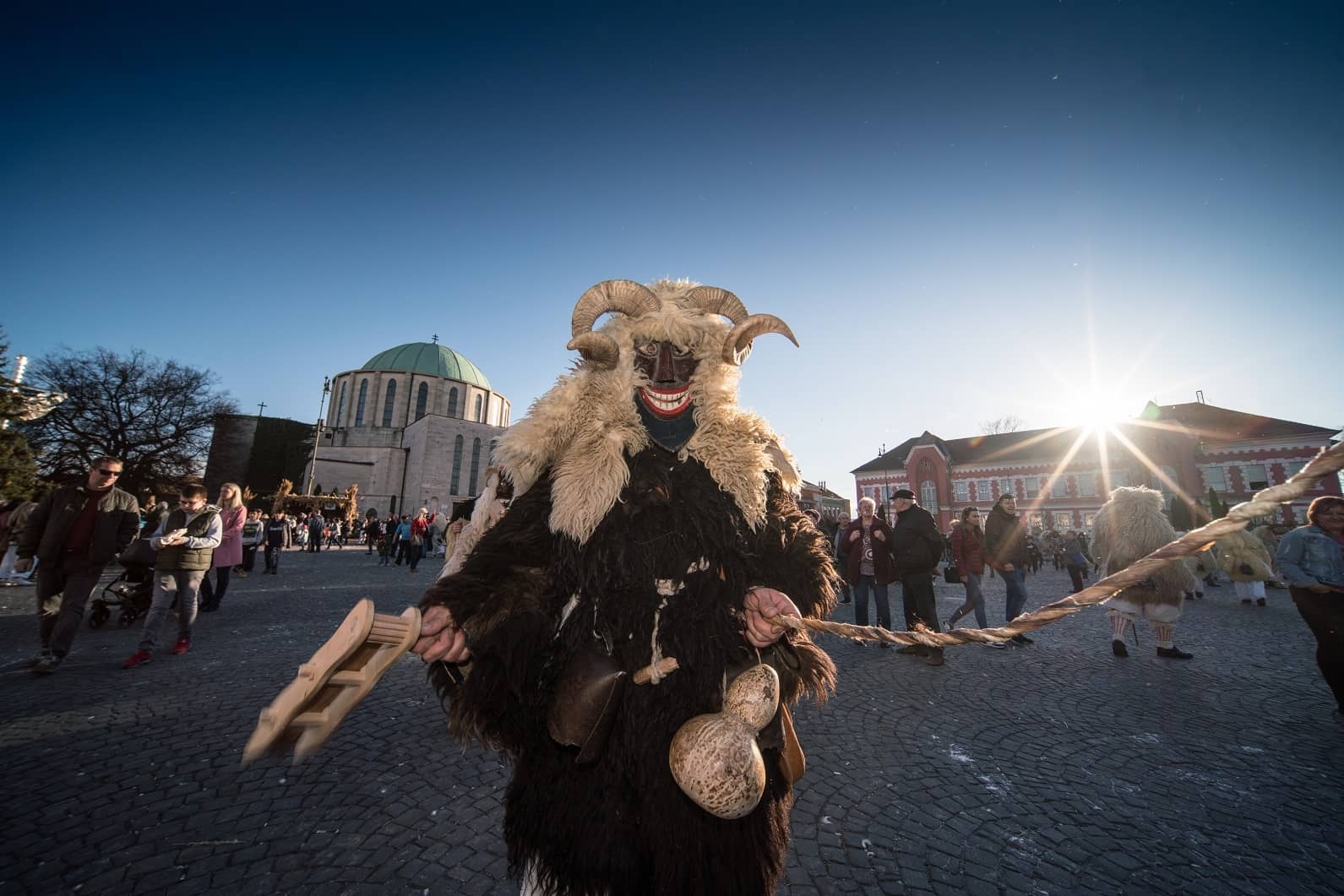 |
| Photo: alumninetworkhungary |
A mix of pagan rituals, folk dancing, and demonic masks, Busójárás is Hungary’s wildest festival. The rowdy carnival is held in February in the small town of Mohács to scare off the last days of winter, but it’s also a celebration of life for the local Croatian minority (Šokci).
In reminiscence of the 16th century Battle of Mohacs, hundreds of busós – townsmen dressed as grotesque monsters – arrive in rowboats on the Danube and then march through the streets in horse-drawn carriages. In addition to the main parade, there are various themed activities to partake in, as well as plenty of spiced wine and pálinka (traditional fruit brandy) to heat up those chilly days.
8. Air Guitar World Championship, Oulu, Finland
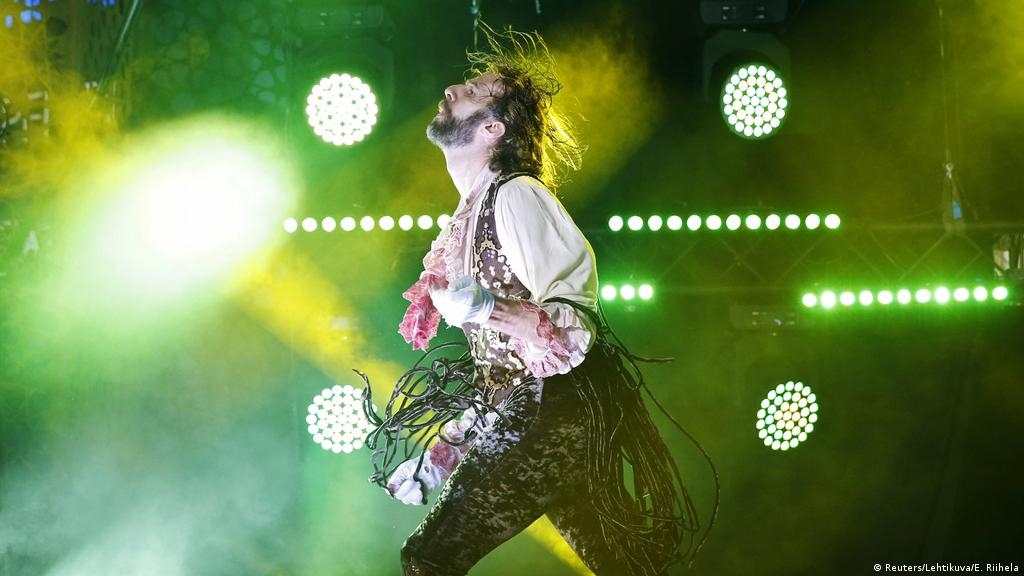 |
| Photo: dw |
Every August, masters of invisible instruments from all over the planet flock to Northern Finland to take the stage by storm during the Air Guitar World Championship. Held together with the Oulu Music Video Festival, the one-of-a-kind competition dates back to 1996 and aims to promote world peace through showmanship.
Since 1996, professional air guitarists from around the world have battled it out every August in Oulu, northern Finland, to be crowned Air Guitar Champions. Judges score participants based on their choice of music, energy, personality, and overall ability to get the crowd rocking. It’s worth attending just for the outfits and killer facial expressions.
9. World Bog Snorkeling Championships, Llanwrtyd Wells, Wales, UK
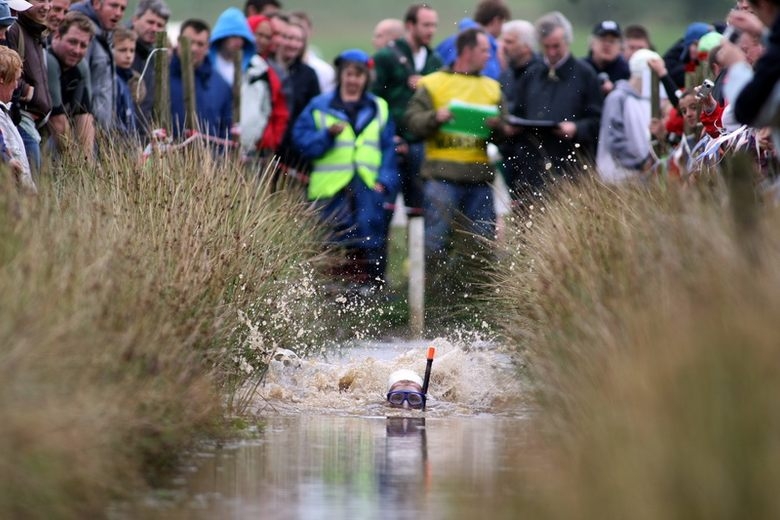 |
| Photo: atlasobscura |
Bog snorkeling originated as a sport in Llanwrtyd Wells in 1976, and the annual August championship has been running since 1985 at Waen Rhydd bog. Armed with a snorkel and flippers, participants must complete two consecutive lengths in a 60-yard trench of water cut through a peat bog, relying only on their flippers to push them through.
Hundreds travel to Wales from around the world to take part in this unusual sporting event.
10. Pourcailhade (Festival of the Pig), Trie Sur Baïse, France
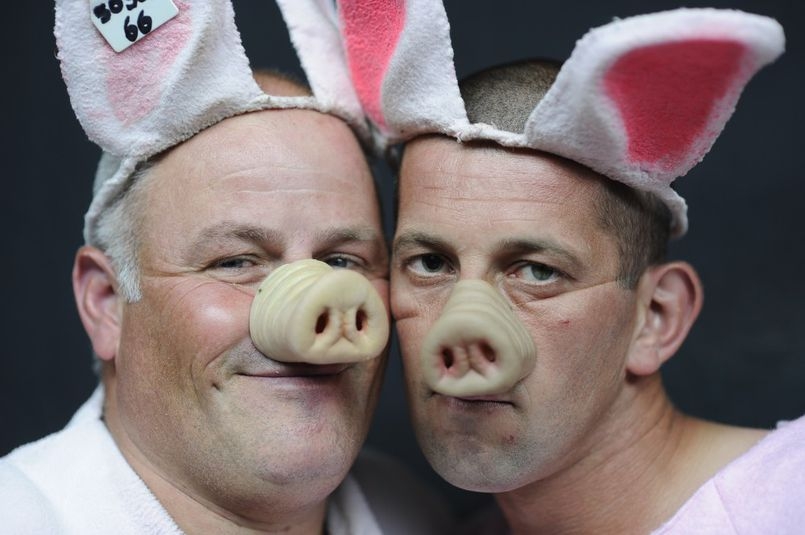 |
| Photo: ladepeche |
Much like the pumpkin madness of Ludwigsburg, Trie Sur Baïse hosts a in August each year “honouring the humble swine”. Among the festivities, which involve eating competitions and piglet racing, is the highlight: Le Championnat de France du Cri de Cochon, whereupon contestants are charged with doing pig impressions at varying stages of a pigs life. Oh and there’s also a black pudding eating competition, where players have to eat ONE METRE OF BLACK PUDDING.
Don’t forget to bring your appetite for the eating portion of the program, where the menu — not surprisingly — consists mostly of pork. This year’s festival just ended, and 2017 dates should be announced soon.
How Europe celebrates the summer solsticeThe Summer Solstice (also known as Midsummer) is the longest day of the year, marking the beginning of summer. It happens twice a year, once in the northern hemisphere, falling around the 21st of June, and once in the southern hemisphere around the 21st of December (the dates differ slightly in some years so check your calendar). The Summer Solstice in Europe (Northern hemisphere) has been a time of celebration for centuries, with festivals and rituals to celebrate the longer days of summer, warmer weather, and all the joy summer brings us. Some of these ceremonies have been virtually unchanged for centuries, providing a living link to the history of the continent. Stonehenge, EnglandStonehenge is arguably the most recognized monument that is connected with the summer solstice! Thousands of people (including new-age druids and pagans) gather at the neolithic structures in the southwest of England to celebrate. On the summer solstice, the sunrise aligns directly with the stone circle making for epic scenes! The true origin of Stonehenge is shrouded in mystery. However, one theory suggests it was built to connect the sun, moon, Earth and seasons making it an important monument for summer solstice celebrations. Midsommar, SwedenMidsummer in Sweden is filled with food, dancing, festivals, and flowers! Swedes of all ages head outdoors or to the countryside with family and friends to celebrate. Floral crowns, the maypole, and many folk dances are the order of the day! Traditional food includes pickled herring, potatoes, chives, and sour cream plus schnapps and vodka! If you’re heading to Sweden to celebrate, head to Skansen (an open-air museum) in Stockholm or any outdoor park! Juhannus, FinlandThe summer solstice celebration is also a national holiday in Finland! It is known as Midsummer and Juhannus (as midsummer is also a celebration of St. John the Baptist). The Finns typically enjoy the holiday away from big cities; people gather with family and friends to fish, go boating, barbecue, and enjoy saunas and light bonfires! Finland enjoys its longest daylight hours of the year around Midsummer with some places in the north of Finland, such as Lapland, experiencing the Midnight Sun! Many years ago, people used to cast spells to help them find a spouse or increase fertility. Today, it is still a popular day for marriages. |
 Top 15 Weirdest Mooncakes For Mid-Autumn Festival Top 15 Weirdest Mooncakes For Mid-Autumn Festival Mid-Autumn is coming. Let’s make this year’s festival more special with these weird mooncakes. |
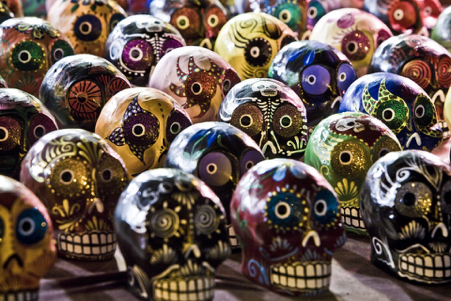 Top Most Popular Holidays for October From Around The World Top Most Popular Holidays for October From Around The World There are many October celebrations that people all over the world enjoy. Discover a worldwide listing of most popular holidays, events and attractions for October. |
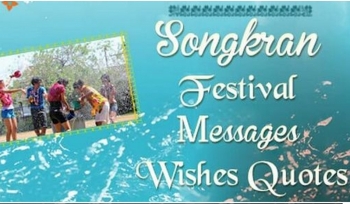 Songkran Festival: Top 100+ Best Wishes, Quotes and Messages Songkran Festival: Top 100+ Best Wishes, Quotes and Messages Songkran Water Festival is generally a three-day long festival occurring from 13th to 15th April . Find the Best Wishes, Quotes, Messages, Greetings and Images ... |

















